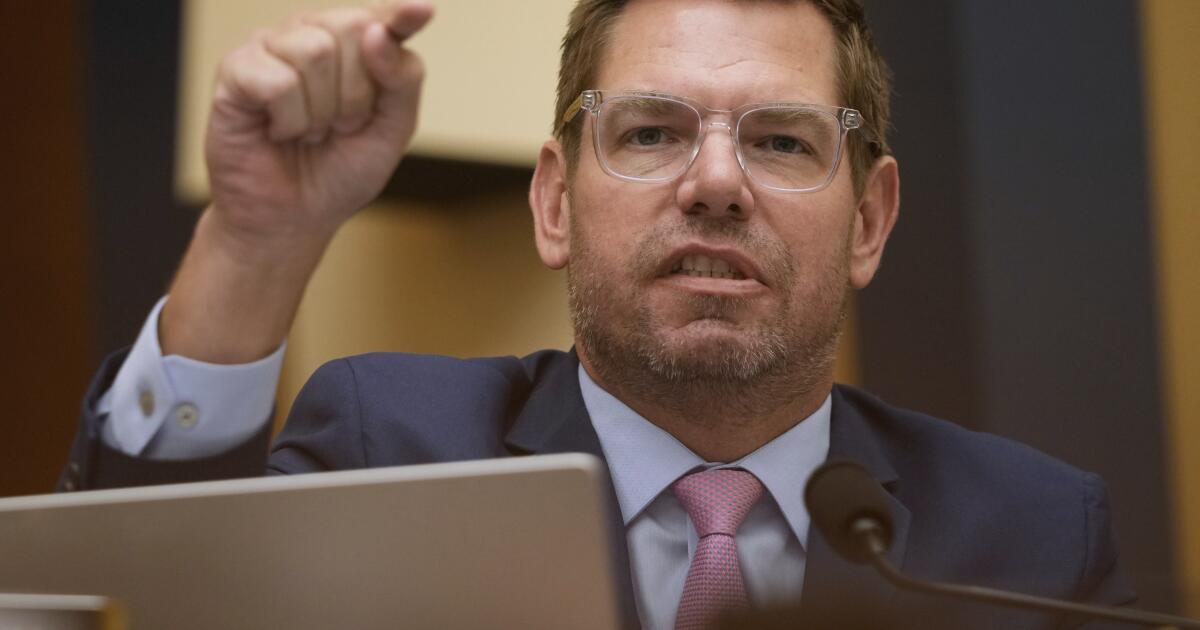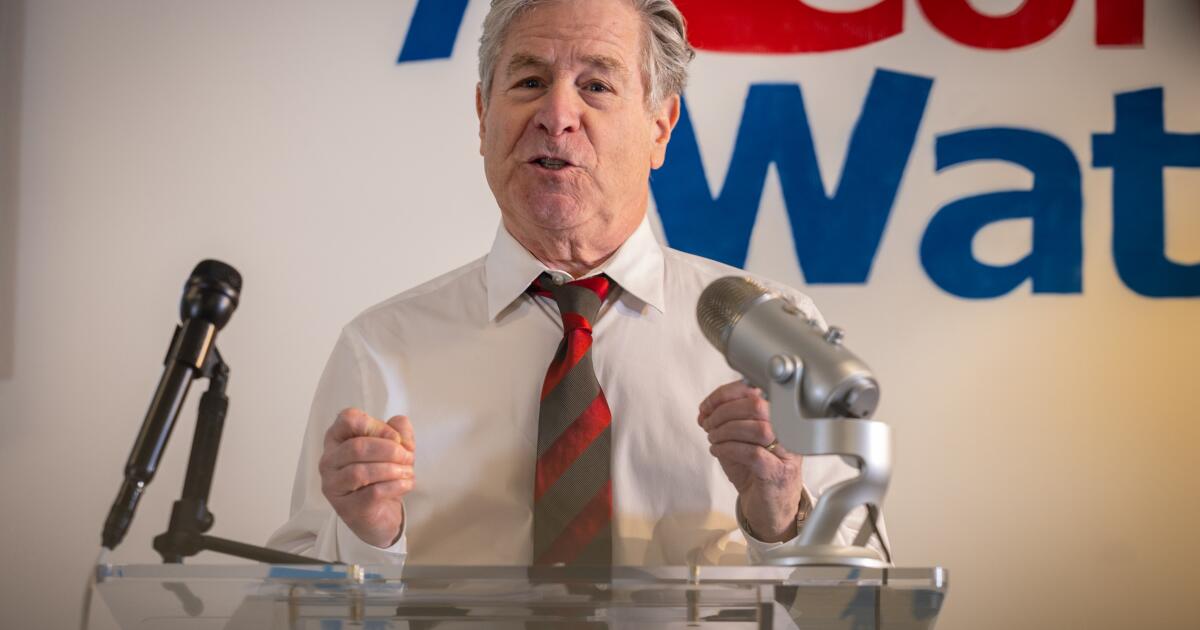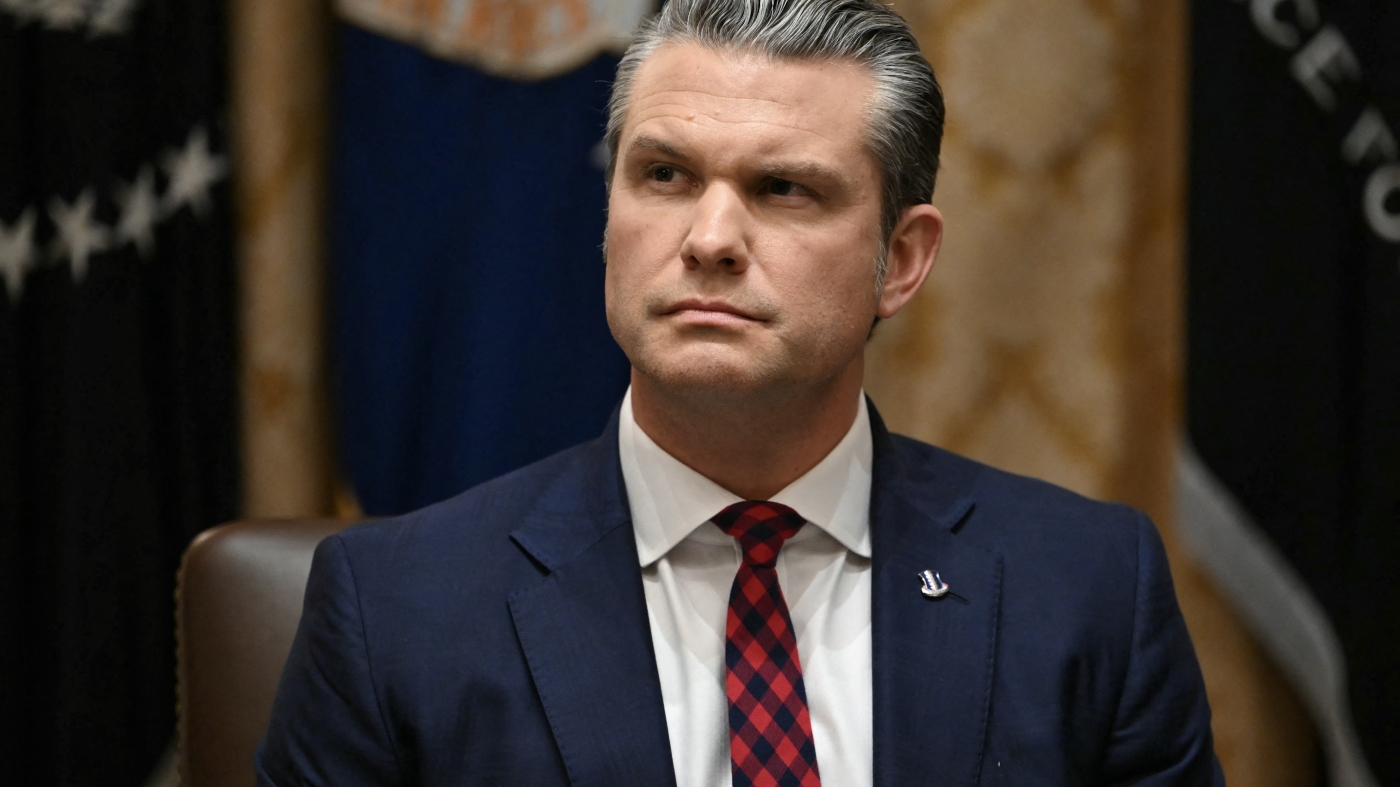Finance
Look who’s bringing crypto back: Fidelity, BlackRock, and their Wall Street friends – The Boston Globe

Among the financial titans cleared to sell “exchange traded funds” that invest directly in bitcoin are Boston’s Fidelity Investments, along with other heavies such as BlackRock and VanEck. On Fidelity’s investment platform, one of the largest in the world, you can now buy these ETFs right alongside regular stocks and bonds.
Franklin Templeton, another investment giant, on Thursday posted a picture of its Ben Franklin avatar featuring the ‘laser eyes’ meme, usually used by crypto superfans on social media to embellish their profile pictures with a tongue-in-cheek, futuristic vibe.
“It’s a very big deal but possibly not for some of the reasons people have been excited on X, and all the memes and jokes of the last few hours,” said Christian Catalini, founder of the MIT Cryptoeconomics Lab. “It’s a very important step toward bitcoin establishing itself as an important, new asset class that traditional finance institutions can directly engage with.”
(Catalini is also cofounder of the bitcoin payments company Lightspark.)
If you have not been paying attention to crypto following the market crushing implosion of the FTX exchange fourteen months ago, this might surprise you: Despite mounting regulatory and economic setbacks, crypto was a top market performer in 2023.
Bitcoin, the largest and most valuable cryptocurrency, surged 154 percent last year. Meanwhile, the Standard & Poor’s 500 index gained 24 percent, and Nasdaq rose some 44 percent.
All this was happening as one-time FTX chief executive Sam Bankman-Fried went on trial — and was convicted — for the fraud associated with his firm’s collapse.
“It’s been a wild ride to see the belief system of this industry come to fruition,” said Dave Balter, chief executive at FlipSide Crypto, a Cambridge firm that specializes in crypto data analysis. “The ‘big deal’ on a personal level’s a spiritual one, where disbelievers and contrarians now recognize why our conviction has never wavered.”
But even as some big names have come along to the crypto world, there are some high-profile holdouts — and they’re airing some of the same critiques that have faced crypto for years. Namely, bitcoin and other cryptocurrencies have always been among the riskiest, most volatile investments — prone to wild swings in value that are difficult to predict.
Vanguard, the bastion of plain-vanilla index funds, said it was not planning to offer bitcoin ETFs through its brokerage even as its competitors rushed to do so.
“Our perspective is that these products do not align with our offer focused on asset classes such as equities, bonds, and cash, which Vanguard views as the building blocks of a well-balanced, long-term investment portfolio,” the company said in a statement to The Wall Street Journal.
And lest anyone think crypto had lost its ability to unpleasantly surprise investors, the market took another big hit just days after the ETF approval many boosters had been eagerly awaiting. By Sunday, bitcoin had seen its price drop by upward of 10 percent from its midweek high as investors sought to take profits following the recent runup.
It was just the first week of growing pains in the relationship between bitcoin and the big-time traditional investment firms.
“It’s like communing with the enemy,” said Ryan Shea, a London-based crypto economist at the financial technology firm Trakx. “But for moms and pops to get comfortable in this world, to gain legitimacy, it’s important to get to the next level.”

Traditionally, buying bitcoin or other cryptocurrencies has looked a lot different than trading more familiar investments. Investors often must create accounts with crypto exchanges such as Coinbase (though a handful of stock brokerages offer some crypto services). And for those who want maximum control of their assets’ security, there are a handful of independent “crypto wallets” to use for storage.
Compare that process to the relative ease of investing in one of these new bitcoin ETFs, which you can buy and sell in the same way you’d trade shares in Microsoft or Nvidia. While ETFs for stock and other investments have long been available to brokerage customers, this is the first time one of these funds can actually hold bitcoin.
Already, the 11 funds approved by the SEC are battling it out over the new money in the market, and that could mean lower costs for consumers in the short term. They are competing on fees, which tend to be below 0.5 percent of assets, and some, such as ARK Investment Management, have temporarily waived fees altogether.
Bitcoin-linked products that were on the market before, including derivatives-based funds and trusts, charge as much as 2 to 3 percent.
“It’s a land grab,” said Paul Karger, cohead of Boston’s Twin Focus, a wealth adviser. “A handful of big winners will own most of the Main Street in-flows.”
Given the lower fees, these new funds may hew to the price action of bitcoin more closely. That is something their predecessors, which were largely based on futures contracts and have been around for two years and change, have not done. This discrepancy, called ‘tracking error’ in trade lingo, occurs when an ETF’s value diverges from its underlying assets.
Matthew Walsh, of Boston blockchain investor Castle Island Ventures, said that bitcoin futures ETFs have a “tracking error,” that can reach 5 to 10 percent, while he predicts the spot ETFs will have a one-to-one correlation to the underlying price of bitcoin. “It’s a huge win for the retail investor,” Walsh said.
Eric Biegeleisen, partner and deputy investment chief at ETF investor 3Edge, said with this move, bitcoin is a step closer to becoming a “legitimate” asset. While he likes having 11 funds to choose from, now comes the work to figure out which one he likes best. “Certainly, there are concerns right out of the gate,” he added. Chief among them are fraud and asset security.
It is going to take a huge amount of education to get investors comfortable, said Ophelia Snyder, cofounder and president of 21Shares, a financial firm that worked with ARK to create one of the new bitcoin ETFs. But the early signals show there’s a lot of potential.
“Crypto’s never seen money like this. A billion dollars is a lot of money in one day, but we saw that within the first two hours. This isn’t the same ballgame anymore.”

Suchita Nayar can be reached at suchita.nayar@globe.com.

Finance
Boeing’s new CFO sees ‘performance culture’ driving a return to positive cash flow next year | Fortune

Good morning. As a new hire, you never truly know a company’s culture until you experience it firsthand. For Boeing CFO Jay Malave, it has been a little over three months—and he is ready to offer an evaluation.
After a series of aircraft malfunctions, management challenges, and a strike by more than 33,000 machinists in 2024, Boeing has seen significant changes in its executive leadership over the past year. Malave began his tenure as EVP and CFO on Aug. 15, succeeding Brian West, who served as finance chief for four years. Kelly Ortberg became Boeing’s president and CEO in August 2024.
Speaking Tuesday at the UBS Global Industrials and Transportation Conference, Malave said that, by the time he joined the company, he was already benefiting from culture changes Ortberg had put in motion.
“What I’ve seen is a really engaged workforce, a very strong management team—one that has a can-do attitude,” Malave said. Management is focused on improvement and making Boeing better every day, he said. “To me, that is incredibly important, because that’s a sign of a performance culture, and that’s one of the things you look for when you join a company,” Malave said. “You can never really tell from the outside looking in what it’s actually like working in the company.”
He described “active management” as a leadership team that is “willing to roll up its sleeves, get its hands dirty, help solve problems, and be part of the solutions—and that’s exactly what I see here at Boeing,” he said. “I’m that type of person who likes to get into the details, to focus on how we solve a problem rather than just observing it. From my perspective, I’ve been able to transition pretty easily into an environment like that.”
At Boeing (No. 63 on the Fortune 500), Malave leads the finance organization, as well as strategy, business planning, and global real estate, and he serves on the company’s executive council. He was most recently CFO of Lockheed Martin and previously held senior finance roles at L3Harris Technologies. He also spent more than 20 years at United Technologies (UTC), including serving as CFO of Carrier Corporation when it was a UTC division.
Boeing’s path back to positive cash flow
During the conversation, Malave also sketched out a financial reset for Boeing. He expects the company to move back into positive free cash flow in 2026 in the low single-digit billions. This is dependent upon ramping up production of the 737 Max and 787 Dreamliner and working through its stockpile of undelivered jets.
Malave described next year as the start of rebuilding toward Boeing’s long-standing $10 billion annual cash-generation target, with higher production rates key toward that ambition. The outlook marks a sharp improvement from roughly $2 billion in expected free cash outflow in 2025, and his comments helped lift Boeing shares by nearly 10% on Tuesday.
Risk, opportunity—and no ‘grenades’ for BDS
In July, Boeing veteran Stephen Parker was appointed president and CEO of its Defense, Space & Security (BDS) business, after serving as interim leader since September 2024. Malave is temporarily separated from BDS because of his recent role at Lockheed Martin, and Boeing has formally agreed he will not take part in BDS activities until the end of the year to avoid potential conflicts of interest with his former employer.
Malave stressed that he does not plan to disrupt the BDS portfolio once he is able to engage there. “I think there’s been some investor angst in terms of, once Jay Malave gets access to the BDS program, there’s going to be a bunch of grenades that go off on all these programs,” he said. “I’m there to learn.” He added, “In any program, there’s going to be risk, there’s going to be opportunities. My job will be: How can I help them mitigate risk, and how can I help them realize opportunities? I’m not going in there with a mandate or an agenda to throw grenades at different programs.”
SherylEstrada
sheryl.estrada@fortune.com
Leaderboard
Michele Allen was appointed CFO of Jersey Mike’s Subs, a franchisor of fast-casual sandwich shops, effective Dec. 1. Allen succeeds Walter Tombs, who is retiring from Jersey Mike’s in January after 26 years with the company. Allen brings more than 25 years of financial leadership experience. Most recently, she served as CFO and head of strategy at Wyndham Hotels & Resorts. Allen began her career with Deloitte as an auditor.
Jessica Ross was appointed CFO of GitLab Inc. (Nasdaq: GTLB), a DevSecOps platform, effective Jan. 15. Ross joins the company from Frontdoor, where she served as CFO. She has more than 25 years of experience in finance, accounting, and operational leadership at companies like Salesforce and Stitch Fix, and spent 12 years in public accounting at Arthur Andersen and Deloitte.
Big Deal
Adobe has released online shopping data for the 2025 holiday season covering Cyber Week, the five-day shopping period from Thanksgiving through Black Friday and Cyber Monday. Consumers spent a total of $14.25 billion online on Cyber Monday, up 7.1% year over year and above Adobe’s initial projection of $14.2 billion (up 6.3% year over year). During the peak hours of 8 to 10 p.m., consumers spent $16 million every minute, according to Adobe.
Usage of the buy now, pay later payment method hit an all-time high on Cyber Monday, driving $1.03 billion in online spend (up 4.2% year over year), according to the data. Adobe also found that on Cyber Monday, AI-driven traffic to U.S. retail sites (measured by shoppers clicking on a link) increased by 670% compared with last year.
Going deeper
“Anthropic is all in on ‘AI safety’—and that’s helping the $183 billion startup win over big business” is a new Fortunefeature by Jeremy Kahn.
Kahn writes: “Anthropic has emerged as one of the leading rivals to OpenAI and Google in the race to build ever-more-capable artificial intelligence. And while Anthropic and its Claude family of AI models don’t have quite the same brand recognition as crosstown rival OpenAI and its ChatGPT products, over the past year Claude has quietly emerged as the model that businesses seem to like best. Anthropic, currently valued at $183 billion, has by some metrics pulled ahead of its larger rivals, OpenAI and Google, in enterprise usage.” You can read the complete article here.
Overheard
“Today’s AI-ready employee brings more than technical skills — they work smarter, feel more fulfilled, and contribute more effectively.”
—Sarah Hoffman, director of AI Thought Leadership at AlphaSense, writes in a Fortune opinion piece.
Finance
Elyria keeps sanitation services public, approves rate hikes to avoid financial shortfall
ELYRIA , Ohio— Facing the prospect of millions in deficits, Elyria City Council has chosen to maintain its municipal sanitation department while approving substantial rate increases over the next three years.
The decision came after a financial analysis by Rea Business Advisors warned that without action, the sanitation fund could fall more than $5 million into the red by 2031. The study, an update to similar research from 2018, examined current costs and projected financial needs through the end of the decade.
Adam Letera of Rea Business Advisors outlined several scenarios for council members at their Nov. 17 meeting: privatize services, implement moderate rate increases, or maintain the status quo. A 3% annual rate increase would only postpone a financial shortfall, while a 5% increase could sustain a positive fund balance. Without rate adjustments or privatization, the study projects the sanitation fund would face negative cash flow by 2026.
Despite the financial pressure, the Strategic Planning Committee voted last month to reject privatization. While privatization might offer lower rates, officials highlighted that city-run operations provide a level of service that a private contractor could not match.
On Nov. 24, the finance committee formalized the rate structure for the coming years. The approved plan implements a 5% increase annually for 2026, 2027 and 2028—matching the consultant’s recommendation for financial stability.
Safety Service Director Chris Pyanowski framed the rate adjustment as the necessary follow-up to keeping services municipal. He told the council that having voted to retain the department, members now needed to ensure it remains funded.
The incremental increases are designed to prevent service disruptions while maintaining the city’s full range of sanitation offerings.
Finance
Triodos Bank plans to finance 275 energy transition projects by 2030

Triodos Bank has unveiled its first integrated Climate & Nature Strategy, announcing a comprehensive approach to accelerate the energy transition, reduce financed emissions and increase investment in nature-based solutions.
The Triodos Bank energy transition strategy, ‘Dare to Act. Now.’, sets out measurable targets to drive climate and biodiversity action by 2030.
Discover B2B Marketing That Performs
Combine business intelligence and editorial excellence to reach engaged professionals across 36 leading media platforms.
Find out more
Triodos Bank’s new four-pillar strategy marks the first time the bank has unified its climate and biodiversity ambitions.
The plan includes a commitment to cut absolute financed emissions by at least 42% by 2030, up from the 32% target set in 2022.
The focus is on three key activities that together account for 90% of the bank’s emissions footprint: business loans, mortgages, and listed equities and bonds managed by Triodos Investment Management.
Another pillar of the Triodos Bank energy transition strategy is the financing of 275 energy transition projects over the next five years. The bank aims to support next-generation, decentralised and community-led solutions, building on its “strong track record” in renewable energy finance.
The deal-count target is designed to ensure that finance reaches not only large utilities but also cooperatives, innovators and smaller community-led initiatives that often face challenges in accessing mainstream capital.
In addition to the energy transition targets, Triodos Bank plans to channel €500m ($580.39m) into high-integrity, nature-based solutions (NbS) by 2030. These projects are intended to deliver measurable ecological and social benefits, addressing both climate and biodiversity challenges together.
From 2026, the bank will begin reporting on its progress towards this investment goal, as well as on the positive biodiversity impacts of its financed projects. The aim is to provide greater transparency on how investments in NbS contribute tangible benefits for biodiversity.
Triodos Bank’s fourth strategy includes a strong advocacy component. The bank has called for systemic change in the financial sector.
It has stated that banks are still directing €650bn annually into fossil fuels, which sustains dependency on non-renewable energy sources.
The bank is advocating for international agreements such as the Fossil Fuel Non-Proliferation Treaty to phase out fossil fuels and create robust frameworks for high-integrity NbS.
Additionally, Triodos Bank is campaigning for energy-efficient housing and bio-based building standards.
As part of its advocacy, Triodos Bank has sought for binding rules including mandatory fossil-phase-out pathways for all banks; required short-term emissions reduction targets for 2030–35, with transparent action plans; alignment of financial regulation with the Paris Agreement and adherence to 1.5°C reduction pathways; separate targets for emissions reduction and carbon removal; and robust integrity standards for nature-based solutions.
Triodos Bank CEO Marcel Zuidam emphasised the interconnectedness of climate change and biodiversity loss, stating: “Climate change and biodiversity loss are not separate crises. They are deeply interconnected. Restoring ecosystems is essential to stabilising the climate, and climate action must protect biodiversity. Our strategy is about real reductions, real solutions and real leadership.
“We invite the financial sector to join us in embracing long-term well-being and taking action for a hopeful future. Together, we can drive the systemic change needed to stay within planetary boundaries. This means aligning financial flows with the Paris Agreement, investing in nature restoration and a clear road map to end the financing of the fossil fuel industry.”
Netherlands-based Triodos Bank has branches in Belgium, Germany, the UK and Spain.
-

 News1 day ago
News1 day agoTrump threatens strikes on any country he claims makes drugs for US
-

 Politics1 day ago
Politics1 day agoTrump rips Somali community as federal agents reportedly eye Minnesota enforcement sweep
-

 World1 day ago
World1 day agoHonduras election council member accuses colleague of ‘intimidation’
-

 Technology7 days ago
Technology7 days agoNew scam sends fake Microsoft 365 login pages
-

 Politics6 days ago
Politics6 days agoRep. Swalwell’s suit alleges abuse of power, adds to scrutiny of Trump official’s mortgage probes
-

 Business1 week ago
Business1 week agoStruggling Six Flags names new CEO. What does that mean for Knott’s and Magic Mountain?
-

 Ohio1 week ago
Ohio1 week agoSnow set to surge across Northeast Ohio, threatening Thanksgiving travel
-

 News7 days ago
News7 days ago2 National Guard members wounded in ‘targeted’ attack in D.C., authorities say
























